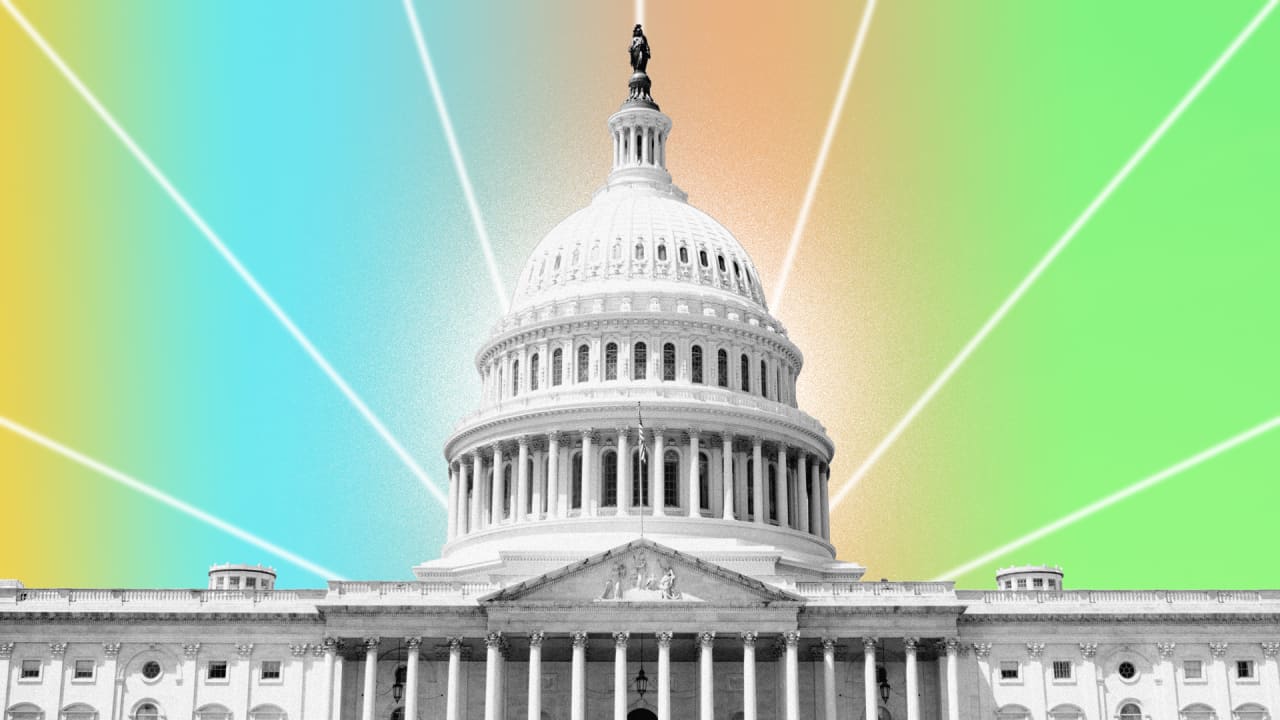
미국의 IT 전문 미디어 벤처비트가 전한 소식이다.
몇 주 전, 애플은 앱 개발자, 광고주, 페이스북이 오랫동안 걱정해왔던 변경 사항을 적용했다. 애플은 광고주 식별자(IDFA)에 대한 액세스 권한과 타사 사이트 및 앱에서 사용자를 “추적”하는 기능을 옵트인하도록 하였다. 애플의 이러한 개인정보보호 강화에도 당장은 큰 타격을 받지 않았던 개발자들과 광고주들은 안드로이드의 개인정보보호 정책 변화를 눈여겨보고 있다.
우선 애플의 개인정보보호 강화에 대한 초기 신호는 iOS 추적에 대한 광범위한 옵트인 선택 현상이다. 일부 앱은 사용자의 45-55%가 데이터 수집에 동의를 하는 것으로 나타났다. 그러나 대체적으로는 데이터 수집에 동의를 하는 비율이 5-10%를 맴돌고 있다. 그러나 아직까지는 변화의 결과로 누가 이익이 되고, 손실을 보고 있는지는 알려진 바가 없다.
많은 사람들은 구글이 지난주에 진행된 개발자 컨퍼런스에서 Android AdID가 애플과 비슷한 변화를 발표할 것으로 예상했지만 발표를 있지는 않았다. 그러나 이는 단지 발표 시점이 지연되었을 뿐이지 변화를 하지 않는다고 보는 것은 힘들다는 게 관계자들의 전언이다.
다만, 구글이 반드시 애플과 동일한 변화를 할 것이라고 생각할 필요는 없다. 구글의 최근 동향을 살피면 구글이 어떠한 변화를 진행할 지 예측해볼 수 있으며 구글의 최종 변화에도 큰 영향을 받지 않게끔 전략을 짜볼 수 있다.
다음은 구글이 이후 발표할 수 있는 세 가지 변화 옵션과 각 변화의 가능성 및 영향이다.
옵션 1: 안드로이드가 크롬 프라이버시 샌드박스와 함께 운영된다.

가장 상황이 복잡해지는 변화는 안드로이드 ADID를 더 이상 사용하지 않고 안드로이드 운영체제로 광고 게재 및 보고를 이동시키는 것이다. 이러한 접근 방식은 크롬(Chrome) Privacy Sandbox팀의 작업을 기반으로 하며 애플의 SKadNetwork 일부 기능을 반영할 수 있다. 상위 수준에서 Privacy Sandbox와 SKadNetwork와 같은 솔루션은 개발자, 발행자와 소비자 간의 관계를 중단시킨다.
이러한 접근 방식이 소비자 개인 정보 보호에 도움이 되는지에 대해서는 의문이 있지만, 자명한 것은 독립적인 광고 기술, 광고주, 그리고 아마도 게시자와 앱 개발자만이 피해를 입으며 플랫폼은 강화될 것이라는 것이다. 구글은 이미 프라이버시 샌드박스의 시장 점유 영향에 대해서 조사를 받고 있다. 구글이 경쟁 규제 기관의 안드로이드에 대한 공격을 현실적으로 감당하는 것은 힘들어 보인다.
결론: 이 옵션은 가능성은 낮지만 구글이 크롬과 안드로이드를 함께 운영하기로 결정한다면 가능하다.
옵션 2: 안드로이드가 애플과 유사한 개인정보보호 정책을 진행한다.

또 다른 옵션은 구글이 광고 추적 투명성 프레임 워크에 대해 애플이 취한 접근 방식을 그대로 반영하는 것이다. Android AdID를 옵트인(opt-in) 뒤에 두고 ID와 관련된 정책 프레임워크를 실행하여 추적의 광범위한 정의를 규제하고 시행하는 것이다. iOS에서의 추적은 IDFA에 대한 단순한 액세스뿐만 아니라 전체 데이터 사용을 포함되었다.
이 옵션은 가능성이 적은 것은 아니지만, 구글이 높은 관심을 갖는 두 개의 이해 관계자들, 즉 앱 개발자와 광고주들을 소외시킬 수 있다. 앱 개발자는 광고가 앱 설치를 실제로 유도하는지 확인하기 힘들 것이고, 광고주들은 앱에서 개인화된 광고를 전달하기가 더 어려울 것이다. 게다가 최근 의회의 증언은 구글과 달리 애플은 개발자들에게 온정주의를 가지고 있고, 애플은 광고 생태계에 기득권을 가지고 있지 않다고 평가하고 있다.
만약 구글이 시행과 함께 “추적”에 관한 주요 정책 변화의 경로를 밟게 된다면, 개발자와 광고주가 이러한 의미 있는 변화에 적절히 대비할 수 있는 시간을 주는 협력적인 프로세스를 기대할 수 있다.
결론: 이러한 선택은 일어날 수 있지만, 구글은 이해관계자들로부터 많은 반격을 감수해야 할 것이다.
옵션 3: AdID를 옵트인 뒤로만 옮기고 정책결정 부분을 미국의회에 넘긴다.

애플의 접근 방식에 대한 가벼운 대안은 Android AdID를 옵트인 뒤로 옮기는 것이지만 애플과 달리 추가 추적에 대한 동의 화면을 제시하지 않는 방법이 있다. Android adID를 옵트인 뒤로 이동시키는 것은 기술적인 변화인 반면, 로그인 시 이메일 주소 수집과 같은 다른 형태의 추적을 위해 옵트인을 요구하는 것은 정책 전환이다. 이러한 접근 방식은 소비자들에게 추가적인 투명성과 선택권을 제공하는 동시에 추적을 정의하는 방법에 대해 대두되고 있는 까다로운 정책 논쟁을 피할 수 있을 것이다.
앱 개발자들은 캘리포니아의 소비자 개인 정보 보호법, 버지니아의 소비자 데이터 보호법, EU의 일반 데이터 보호 규정, 그리고 조만간 진행될 미국 연방의 포괄적인 개인 정보 보호법 등을 근거로 하여 안드로이드 광고 외에 다른 데이터도 수집하여 사용할 수 있다. 그리고 이러한 접근 방식은 어려운 절충과 정책 논쟁을 해결하기 위해 선출된 사람들(미국 의회)에게 소비자가 광고의 추적 대상이 되는 것에 대한 논쟁을 넘길 수 있다.
이것은 세 가지 이유로 가장 가능성이 높은 시나리오이다. 첫째, 소비자들에게는 분명히 올바른 방향으로 나아가는 단계라는 점. 둘째로, 그것은 프라이버시 규제 당국의 우려를 충족시키는데 도움이 된다는 점. 마지막으로, 앱 개발자와 광고주들의 신뢰를 유지할 수 있다는 점이다.
결론: 이 옵션은 구글이 선택할 가능성이 높다.
앞으로 몇 달 내에 안드로이드의 개인정보보호 강화방안은 발표될 예정이므로 개발자와 광고주는 위의 세가지 옵션 중 어느 것이 가장 통과할 가능성이 높은지 결정한 다음 자신의 사업을 계획하고 준비해야 한다.
한가지 더 기억해야 할 사항은 구글이 어떤 경로를 선택하든 소비자 개인 정보 보호는 우선시 된다는 점이다. 이는 앞으로 더 적은 데이터 규모, 더 똑똑한 데이터 과학, 소비자가 데이터 수집 및 사용을 허용할 때 발생하는 가치 교환에 대한 명확한 설명이 필요하다는 것을 의미한다.
A few weeks ago, Apple made the change that app developers, advertisers, and Facebook have long fretted about: They moved access to the Identifier for Advertisers (IDFA) and the ability to “track” users across third-party sites and apps behind an opt-in. Developers and advertisers who weren’t immediately hit hard by Apple’s swing are waiting for the second shoe to drop: Google’s inevitable changes to the Android AdID.
Early signals indicate a wide range of opt-in rates for iOS tracking. Some of the apps I’ve spoken to say they are seeing up to 45-55% of users opt-ing in. But wider surveys seem to indicate that average opt-in rates are hovering around a more disappointing 5-10%. We don’t quite yet know who will be better off and who will be worse off as a result of the change.
Many expected Google to announce similar changes to Android AdID at its developer conference last week, but the announcement didn’t materialize. If you think the silence means the blow isn’t coming, don’t be fooled. It’s just delayed.
The good news is that developers don’t necessarily need to hang in anticipation — they can evaluate Google’s potential moves to determine and implement a strategy that helps mitigate the impact of Google’s eventual decision.
Here are three paths available to Google, along with the likelihood and suspected impact of each.
Option 1: Letting Android play in the Sandbox
The most complicated shift would be a move to deprecate the Android AdID and move ad delivery and reporting into the Android operating system. Such an approach would build on the work of the Chrome Privacy Sandbox team and could mirror some features of Apple’s SKAdNetwork. At a high-level, solutions like Privacy Sandbox and SKAdNetwork disintermediate the relationship between the developer/publisher and consumer.
While there is a robust debate about whether this approach is good for consumer privacy, what is less arguable is that it would strengthen the platform at the expense of independent ad tech, advertisers and, likely, publishers and app developers. Google is already facing investigations into the competition (and privacy) implications of Privacy Sandbox. Can Google realistically afford an assault on Android from competition regulators?
Conclusion: This option is unlikely, but still possible if Google decides to align Chrome and Android.
Option 2: Google as cop on the beat
Another option would be for Google to mirror the approach Apple has taken with the Ad Tracking Transparency Framework, putting the Android AdID behind an opt-in and launching an associated policy framework to regulate and enforce a broader definition of tracking. Remember, tracking on iOS involves a whole host of data uses beyond just access to the IDFA.
While this outcome isn’t out of the realm of possibility, it would alienate two sets of stakeholders Google cares deeply about: app developers and advertisers. App developers would find it harder to understand if their advertising is driving app installs, and advertisers would find it harder to deliver personalized ads in apps. In contrast to Google, recent Congressional testimony seems to indicate that Apple views developers with some healthy paternalism, and Apple doesn’t have a vested interest in the advertising ecosystem.
If Google does end up going the route of a major policy change around “tracking” accompanied by enforcement, expect a collaborative rollout process that gives developers and advertisers time to adequately prepare for such a meaningful change.
Conclusion: This option could happen, but Google would be risking a lot of blowback from stakeholders it cares about.
Option 3: Opt-in, but with a respect for the law
A lighter-weight alternative to Apple’s approach would be to move the Android AdID behind an opt-in but without requiring the consent screen for additional forms of tracking as Apple has. Moving the Android AdID behind an opt-in is a technical change, whereas requiring the opt-in for other forms of tracking, like the collection of an email address at login, is a policy shift. This approach would provide consumers with additional transparency and choice, while avoiding the thorny policy debate that has emerged around how to define tracking.
App developers could collect and use other data besides the Android AdID in compliance with laws like California’s Consumer Privacy Act, Virginia’s Consumer Data Protection Act, the EU’s General Data Protection Regulation, and — hopefully someday soon — a comprehensive federal U.S. privacy law. And this approach would leave the debate over what constitutes tracking to those elected to grapple with hard trade-offs and settle policy debates: the U.S. Congress.
This is the most likely scenario for three reasons. First, it is clearly a step in the right direction for consumers. Second, it would help satisfy the concerns of privacy regulators. Finally, it would preserve the trust of app developers and advertisers.
Conclusion: Ding ding ding — this seems like the winner.
With an announcement expected in the coming months, developers and advertisers must use this time to place their bets on which of the above three options is most likely to come to pass and then furiously plan and prepare.
Here’s one more thing to remember: Whatever path Google chooses, consumer privacy is going to be prioritized. This likely means that the future will involve less data scale, smarter data science, and a more clear explanation of the value exchange that occurs when a consumer chooses to allow their data to be collected and used. Trust has to be at the core of all that we build.




![[원격근무의 재발견] AI 마케팅의 혁신: 디지털 시대의 마케팅 패러다임 변화](https://mobiinsidecontent.s3.ap-northeast-2.amazonaws.com/kr/wp-content/uploads/2024/06/20164202/240624_AI-%EB%A7%88%EC%BC%80%ED%8C%85-%ED%98%81%EC%8B%A0_02-218x150.jpg)
![[출발 메타버스 여행] 딥페이크와 AI 그리고, 독점 기업 넷플릭스](https://mobiinsidecontent.s3.ap-northeast-2.amazonaws.com/kr/wp-content/uploads/2023/06/27110252/thumbnail_image_1f222ffa-218x150.png)
![[온라인 마케팅에서 실패는 당연하다] 메타(Meta) 광고의 위기 그리고 마케터의 위기](https://mobiinsidecontent.s3.ap-northeast-2.amazonaws.com/kr/wp-content/uploads/2023/02/02111246/2023-02-02-11-11-40-218x150.png)